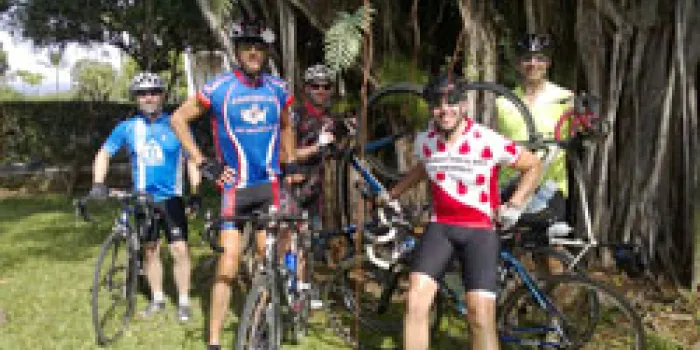Jennifer Chun found very little community support for families of people with bleeding disorders in Oahu, Hawaii, when her son, Kenji, now 5, was diagnosed with hemophilia in 2008. “There had been a chapter in Hawaii a long time ago, but it wasn’t active,” she says. But her son’s hemophilia treatment center (HTC), the Kapi’olani Hemophilia & Thrombosis Treatment Center of Hawai’i, offered some resources and education. “They became our lifeline for support,” she says.
Still, Chun and other families with bleeding disorders in Hawaii felt there should be a chapter serving their community. After meeting with Dawn Rotellini, the National Hemophilia Foundation’s (NHF’s) director of chapter development and training, Chun and her husband decided to resurrect the Hawaii chapter themselves. It took a year, but the Hawaii Hemophilia Foundation (HHF) was reborn in 2010.
There are eight “main islands” of Hawaii: Oahu, Molokai, Lanai, Maui, Kahoolawe, Kauai, Niihau and the island of Hawaii, usually called the Big Island. The Hawaii chapter tries to stay connected to families throughout the islands.
“We provide services to about 30 families,” says Chun. While the majority of those are on Oahu, where the chapter is located, there are also families on Maui, Kauai and the Big Island. HHF runs a family camp, an education day and an annual meeting. This year, it will also hold educational seminars on the other islands. Round-trip airfare between the islands is about $150 per person. “It is much more feasible for HHF to go to the other islands than to have everyone come to us,” says Chun.
The chapter works closely with providers at the HTC in Honolulu. It also reaches out to the wider bleeding disorders community in Hawaii to notify them of upcoming chapter events.
One of HHF’s biggest successes was the Big Island 300, a bike ride around the Big Island. Held April 11–14, 2013, the inaugural ride drew seven cyclists. The first leg of the trip ran from Kona, up the volcano Mauna Kea, down into the town of Waimea, and then to Hilo—about 100 miles. The second leg was approximately 150 miles, from Hilo, then over the volcano Mauna Loa, and to the town of Captain Cook. The third leg was a coastal ride from Captain Cook back to Kona, about 30 miles.
Riders were asked to raise $1,800 for HHF. Sponsorships from Pfizer and Biogen Idec Hemophilia helped offset the chapter’s costs. The chapter raised $37,000.
The chapter plans to expand the ride in 2014, splitting it into two groups based on ability. Mauna Kea rises more than 13,000 feet above sea level, and the ride up is “steep and pretty treacherous,” Chun says. An alternative to biking over an active volcano will be a shorter ride from Kona to a neighboring town. A van will then transport the riders over the volcano to Hilo, where they will join their counterparts who finished the more challenging course.
Dividing the Big Island 300 into ability groups should appeal to more people. The chapter would like to more than double the number of riders next year. Chun has been working closely with Rotellini on ways to promote the ride, including tentative plans to schedule a kickoff at NHF’s Annual Meeting in Anaheim, California, in October.

